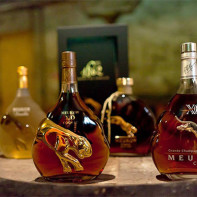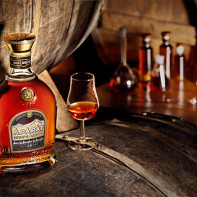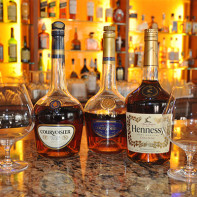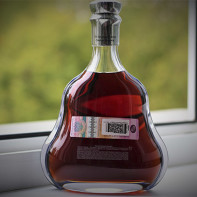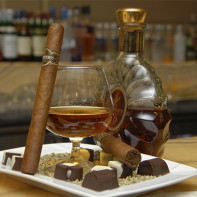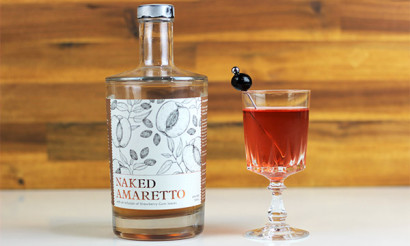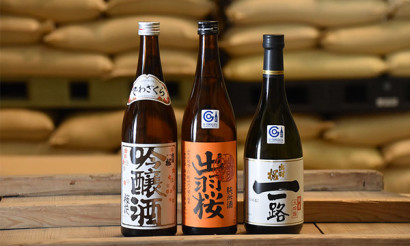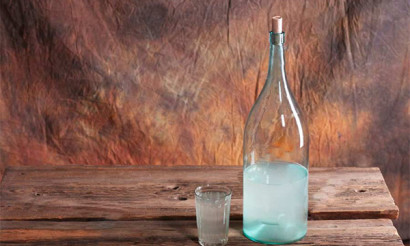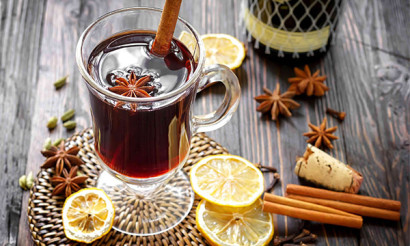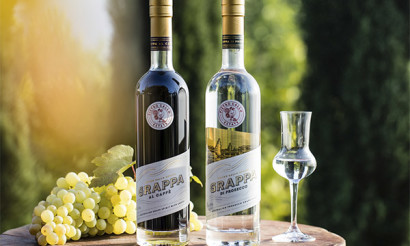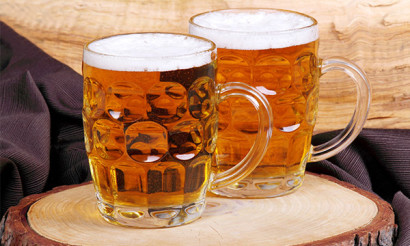How to drink cognac properly
France is known as the birthplace of several original alcoholic beverages that meet the strictest standards. One of them was cognac. Like champagne, it has certain characteristics and a limited production area. Only drinks made in the Poitou-Charentes region bear the proud name of "cognac". The others may be called exclusively "brandy". The powerful organization "National Cognac Bureau" strictly monitors compliance with the norms. It is difficult to imagine the world without vintage flavored cognac, so firmly it has entered the list of elite varieties of alcohol.
- What is cognac
- Historical milestones
- Types
- What's the difference between cognac and whiskey
- Which is better to drink
- Cognac Selection Criteria
- Composition and calories
- What Glasses to Drink Cognac From
- How to drink cognac properly
- How to drink coffee with cognac
- Classic
- African
- Viennese
- Can I Drink Tea and Cognac
- Can I Drink Cognac if I Have Various Conditions
- High blood pressure
- High Fever
- For diabetes
- Gastritis
- Hemorrhoids
- After a stroke
- Angina
- Cognac Cocktails: Recipes
- Alba
- White Delight
- The benefits and harms of cognac
- Can I Drink Cognac Every Day?
What is Cognac
A strong drink with an alcohol content of at least 37.6%, made according to a specific technology from raw materials grown in the Charente Valley, has the right to be called a cognac. This provision is documented and carefully guarded to avoid the appearance of counterfeits. All other vintages, even those made with the appropriate techniques and grapes, are not entitled to this distinction.
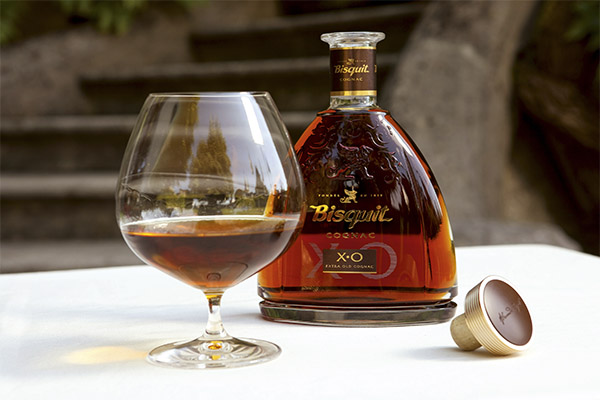
Historical milestones
The recipe and production technology have been honed over the centuries, going the hard way from high acidity wines to a noble beverage. The first exports began in the 11th century. The city of Cognac was already known as the center of the salt trade. The Dutch took a few barrels of wine along with the salt for sampling. Gradually the demand grew, as did the area of the Poitou vineyards. The next step was to try to distill the raw wine for better transportation. It has been observed that when ships are delayed on the road or in ports, the quality of the drink in oak barrels only improves. This is how one of the main conditions for the maturation of cognac was found.
The middle of the seventeenth century brought a change in the technology of distillation which stabilized the flavor qualities. After another century the strict control over the aging time began and a little later the finished drink was bottled. In the 19th century there were accompanying productions where bottles, corks and labels were produced.
At the end of the century a real tragedy happened in the wine and cognac industry. Phylloxera and mildew were brought into the country along with grapes from other countries. These diseases killed most of the vineyards, leading to the collapse of production. It took several decades to restore the volume and develop disease-resistant varieties. The main focus was on Trebbiano, another name for the Unyi Blanc. Almost 90% of cognac is made from it.
Types
There are 2 main types of drinks. The first clearly traces the year, place of cultivation and ageing period, for which it is called millezime or collector's cognac. A bottle of such cognac is sold at auction and forever disappears into the cellars of private collectors. Most involves blending the spirits of different harvests. The process is called assemblage and gives the drink a rich taste with a developed aftertaste.
The classification of cognacs is done according to the time of aging, from 2 to 6 years. In total there are 5 categories.
Interesting: After 70 years in the barrels the properties of cognac no longer change.
The domestic system of drinks implies 3 kinds:
- ordinary;
- vintage;
- collection.
Ordinary is immediately visible on the label, where the number of years of aging is marked with stars. According to GOST, ageing for less than 3 years is not allowed. The vintage cognacs are divided into 4 categories - from aged to very old, having been in barrels for at least 12 years. Cognacs older than 23 years fall into the category of collection cognacs.
What is the difference between cognac and whiskey?
Each of the drinks has formed a large army of fans, who will find a huge number of arguments in favor of the preferred kind. And all the facts and comments are likely to be fair, so the emotions in the dispute will get a special heat. Indeed, outwardly the drinks are similar, but the gustatory content and the traditions of consumption are very different.
- The fundamental difference is in the raw material. Only white grapes of a certain kind are used for cognac. Whiskey is made from cereal grains.
- The level of strength for cognac is strictly defined, with whiskey there may be variations.
- The manufacturing process is also different, distillation remains common, but it is done using different technologies.
- Cognac is practically devoid of syrup and essential oils.
- Whiskey can be produced in any country, but cognac is a drink from only one region in France.
What is better to drink
The question is complicated. Cognac is unambiguously healthier. It is easy to drink, has a pronounced medicinal effect in therapeutic doses, has a rich taste. For the wallet, the choice leans in favor of whiskey.
Criteria for choosing cognac
Sometimes the name of the noble drink is called a tinted alcohol or something very remotely resembling the product of sunny France, while the price is quite impressive. Not to be deceived in your expectations, it is worth considering a few points:
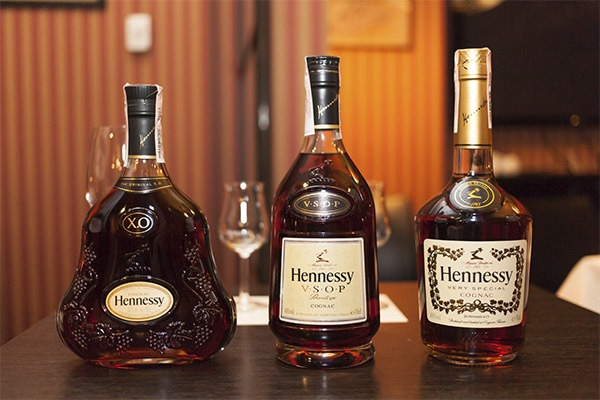
- Real cognac is not sold in stalls and pavilions, for him to go to a specialized store or the appropriate department in a hypermarket.
- The price for a good drink starts at 650 rubles and rises in accordance with the time of aging, it will not cost cheaper.
- The bottles of the leading brands are deliberately simple, strictly shaped, the corks are natural.
- Labels are made with a high degree of clarity, slightly embossed to the touch, the excise stamp is on top, on the package.
- There should be no flavorings or rectified alcohols in the composition.
- Quality is also checked by turning the bottle upside down, after which slowly dripping drops or streaks remain on the walls.
- The beverage is amber in color, transparent, without turbidity or sediment.
No one is immune to mistakes when choosing alcohol. But taking into account the above nuances, the chances of buying quality cognac are significantly increased.
The occasion for the purchase also plays a certain role. If it is necessary to make a splash or create an aura of respectability, while not being shy about money, it is worth paying attention to Hennessy XO, Courvoisier, Martel, Camus in the price range of 12-15 thousand rubles. For a presentation, Courvoisier aged up to 6 years, Remy Martin, Ararat Ani, and Sevan are suitable. For a feast, where you just need the presence of cognac, you should buy the aged and fragrant Armenian symbol, Ararat Akhtamar, Barclay, Koenigsberg, Praskovetsky.
Composition and calories
Grape raw materials are used for the production, so most of the useful substances have successfully transferred to the alcoholic beverage. So in its composition there are:
- tannins;
- B vitamins;
- esters;
- acids;
- alcohols of special composition;
- calcium;
- sodium;
- potassium;
- mono- and disaccharides.
The caloric value of 100 grams is 239 kcal. Since it is consumed in small portions, it is not harmful to the figure and can not provoke weight gain.
What glasses do you drink cognac from?
The peculiarity of the drink is that its aroma and taste are fully revealed just when it is warm. Just poured into a tulip-shaped low glass, a snifter, it needs to breathe, mixing with the air. To do this, the glass is shaken slightly and warmed in the palms of the hands. It is considered bad form to drink the divine nectar in a gulp. It is drunk in tiny portions, slips down the tongue and in warm drops goes down the gullet, leaving a complex multilayered aftertaste. It is customary to pour no more than 50 grams, which just fits in the wide part of the snifter.
In Russia, the custom has been slightly transformed, and instead of the glass, small crystal shot glasses without any patterns or color inclusions may be served. The walls should be completely transparent, so as not to deprive the guests of the pleasure of admiring the play of light in the amber liquid.
How to Drink Cognac Properly
Cognac etiquette prescribes the drink to be consumed after a meal as a digestif to maintain a friendly conversation. It should be served in small glasses. The bottle should be at room temperature, preferably wrapped in a napkin, folded in a corner. Tasting does not forgive haste, requiring respect for the drink and comfortable conditions. That is why cognac is rarely chosen for noisy parties and stand-up parties.
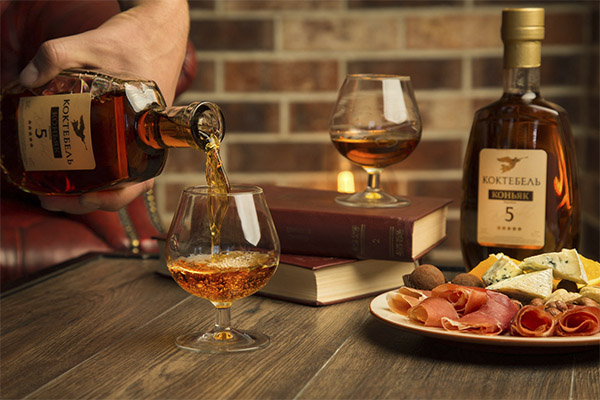
The tasting has three stages. On the first one one admires the appearance, slightly turning the glass. If the drink is of high quality, the walls leave characteristic traces in the form of paths with small droplets at the base. Observing them, you can once again assess the degree of aging by the speed of their disappearance.
The next action is to enjoy the aroma. It comes in three waves. The first is felt at a distance of 7-10 cm and contains vanilla hints. The second is much richer. To feel it, you need to bring the glass almost close to your face and unravel the composition of the bouquet, which usually includes a mixture of fruity scents with a slight presence of linden, violet or apricot. The third wave remains at the very surface of the drink and contains oak and sweet notes.
The first sip is very important. The receptors are still fresh and able to fully appreciate the exquisite taste. The drink is left in the mouth for a few seconds, allowing it to flow on the tongue and gradually reveal all the richness of nuances.
One thing to bear in mind: If you slightly warm the aged cognac in your palms, the taste of the second sip will change slightly, acquiring new shades.
Connoisseurs prefer the rule of three components - cognac, coffee and a cigar. According to their convictions, an appetizer is not required. But the noble assembly is able to stretch the pleasure of one bottle of collection or vintage drink for the entire evening, without requiring more. If, however, a long feast is planned, where the entourage and the rules of service pay little attention, it is necessary to lay the table accordingly.
The stereotype that cognac must be served with lemon is genuinely perplexing to the French. They know that lemon impoverishes the taste of the drink, reducing it to an ordinary alcoholic liquid. In order to emphasize the uniqueness of the variety, it is necessary to choose a few neutral appetizers. Complicated recipes are not in demand, since cognac is served after a meal. It is enough to prepare a few types of cheese, meat and fruit cuts, serve a mix of seafood. If a long evening is planned, several versions of the treat are prepared, regularly updating the filling of the table. They cook quickly and look spectacular:
- Fruit pyramids on skewers;
- canapés of cheese, ham, and small olives;
- sandwiches with red caviar, trout, or salmon;
- mini shrimp kebabs;
- baked mussels;
- dark chocolate;
- cheese balls made from a mixture of feta, walnuts, cottage cheese and a sprig of basil;
- Crab sticks rolls with egg-garlic stuffing.
How to drink coffee with cognac
In the original version, first you slowly drink a cup of fiery strong coffee, then you should enjoy a glass of cognac, and then smoke an aromatic cigar. You can in the name of health do without the last item. But the aromatic mixture of two drinks is also quite popular. It is especially recommended to drink it in case of loss of strength, depression, and regular stress. There are several ways to prepare it.
Classic
The base is prepared from 1 tsp. freshly ground coffee and 200 ml. water. The mixture is put on a very low heat and simmered without a chance of boiling. In the last seconds, the mortar is removed from the fire. It will take 3 trials, then the prepared base is put aside. As soon as the grounds settle, add 50 ml. of brandy and sugar to taste. Drink this coffee in small sips, slowly to feel its warming and relaxing effect, which will later be followed by vivacity.
African
The peculiarity of the recipe is the addition of cocoa at a rate of 1:3. For 100 ml of boiling water take 0.5 teaspoon of cocoa and three times the amount of coffee beans of medium grind. First, the dry mixture is poured into the mortar, then you add near boiling water and keep it on the fire for 2-3 minutes. Add a pinch of cinnamon, 10 ml. cognac and 2 pieces of cane sugar. The drink is effective for colds, anemia, loss of strength, during epidemics of influenza.
Vienna
It contains citrus zest, cinnamon and cloves. The basis is prepared in the traditional way. At the bottom of the cup spices are poured, pour cognac, and set on fire. As soon as the fire dies down, pour the coffee. After 2-3 minutes, the drink is strained and served with a piece of sugar or bitter chocolate.
Can I drink tea with cognac?
Such a mixture emphasizes the virtues of each species and creates an exquisite combination of flavors, provided that the tea is leafy and the cognac is aged. The method of preparation involves mixing all the ingredients at the same time. Pour 200 ml of boiling water into a teapot, add 10 ml of strong alcohol and 1 teaspoon of brew. If desired, a vase with liquid honey is placed on the table.
On the same principle, green tea is prepared.
Can cognac be drunk when suffering from various diseases?
Cognac spirits have a therapeutic effect. They can prevent colds, disinfect the intestines, relieve pain during an exacerbation of peptic ulcer disease and gastritis. There are no strict contraindications to its use, it all depends on the well-being and individual characteristics of the body.
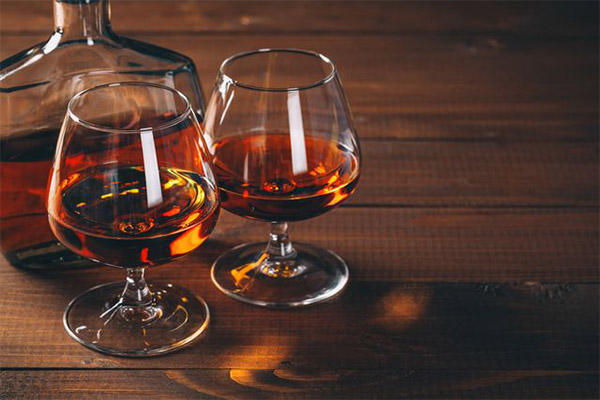
At high blood pressure.
Doctors of the old school try not to prescribe drugs by handfuls, but to use natural remedies. There is even an anecdote about how a hypertensive person came to the doctor and clarifies whether it is true that the cognac dilates blood vessels. The doctor confirms, but reminds him that later they will shrink again, to which the patient categorically throws: "And I will not let them. Uncontrolled consumption of any alcohol is not good for you, but 20-30 ml can really relieve vasospasm, reducing blood pressure.
When there is a fever
Most colds are accompanied by a febrile state and high temperature. In this case, cognac acts as an antiviral and warming agent. But if the increase in the thermometer column is caused by inflammatory processes, then here cognac can do harm.
In diabetes
Patients have a lot of restrictions, but cognac is not included in this list on one condition - the daily dose does not exceed 1 shot, which is about 30-50 ml. Aged vintage drink does not provoke a sharp change in sugar levels and indulge yourself with this taste is possible, but within reasonable limits and not every day.
With gastritis
At first glance it seems paradoxical, but in case of stomach mucosa disorders drinking cognac is not allowed, but necessary. Cognac spirits are even prescribed as medicine and dispensed by prescription. They are taken in extremely small doses and not during an exacerbation.
In hemorrhoids.
This is an unpleasant disease that imposes restrictions and requires a certain diet. The vasodilator effect of alcohol provokes further destruction of the walls, can cause another exacerbation. And yet cognac will bring much less harm than beer or champagne. It is better to reserve 50-100 ml of expensive vintage alcohol for a feast, and distribute it wisely for the duration of the holiday.
After a stroke
The consequences of cerebral hemorrhage can be very severe, and the recovery period sometimes drags on for several years. According to official medicine, it is necessary to completely exclude not only alcohol, but even strong tea and coffee. In folk recipes, on the contrary, a small amount of cognac is recommended as a means to stimulate regeneration and return elasticity to blood vessels. But the dosages are really therapeutic and do not exceed 1 teaspoon 1-2 times a week.
Note: when taking some medicines, the use of alcoholic beverages is completely prohibited.
With sore throat
Cognac helps to quickly relieve inflammation, stop the reproduction of pathogenic bacteria and restore the mucosa, even with the follicular variety of the pathology. It is recommended to first rinse the throat with a solution of furacilin or chamomile infusion, and then drink 1-2 small sips of Ararat or Konigsberg. Hennessy is not quite suitable as a medicine, it is better left for solemn occasions.
Cocktails with cognac: recipes
The noble drink is successfully combined with champagne, liqueur and freshly squeezed orange juice.
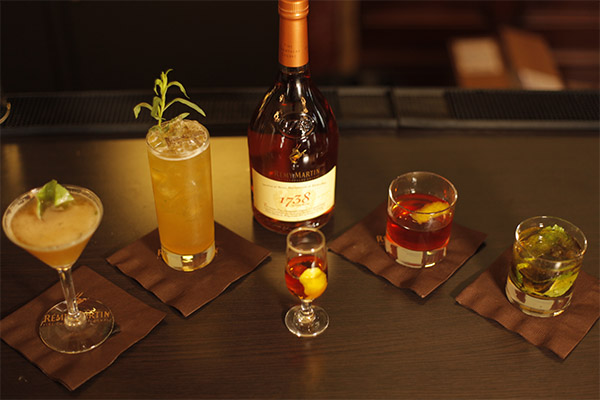
Alba
In the composition in equal parts cognac and orange juice, a little raspberry. The ingredients are whipped, the cocktail is served in a wide glass with a slice of orange as decoration.
White Delight
Despite the fact that cognac is usually drunk warm, it goes great with creamy ice cream. Take 100 ml of milk and 1 banana for 250 g of the cold treat. The mixture is passed through a blender and poured into a tall glass. Serve with cocktail straws.
Also famous cocktails are the English Champagne, Coarnado, Honeymoon.
The benefits and harms of cognac
Officially cognac has never been recognized as a medicine. Nevertheless, it can relieve emotional stress, eliminate insomnia, improve intestinal peristalsis, reduce fever and sore throat. It is known about the preventive properties of the drink, preventing the development of heart attack and atherosclerosis. It helps to keep you going during epidemics of influenza and acute respiratory infections, and a few drops on a lump of sugar will kill a headache.
The harmful effects of the drink are due to uncontrolled consumption. It is not recommended to give it to children and pregnant women, people with acute diseases, those whose psyche is unstable. You should not offer even small doses to a person with alcohol dependence.
One shot a day after a busy lunch is enough to raise the mood and activate digestion, not to mention the enjoyment of taste and flavor.
Is it possible to drink cognac every day?
There is a whole list of diseases in which alcohol in any form is prohibited in the period of exacerbation. Then comes a more sparing regime in diet and lifestyle, where small gastronomic pleasures are allowed. There is no official data on the benefits or harms of a daily digestif of 50 ml. Those who drive or work in areas that require high attention, such a luxury during the day is clearly not needed. But at the weekend you can also go on your own desires, tasting a good cognac with a cup of strong coffee.
«Important: All information on this site is provided for informational purposes only. for informational purposes only. Please consult with your health care professional before using any of the recommendations. specialist before using any of the recommendations. Neither the editors nor the authors shall be liable for any possible harm caused by materials."

